WP 5 Infrastructure resilience
 Land-, sea-, and air-based transports are all parts of essential infrastructure vulnerable to natural hazards. The generic question dealt with in WP5 is:
Land-, sea-, and air-based transports are all parts of essential infrastructure vulnerable to natural hazards. The generic question dealt with in WP5 is:
What measures can reduce the vulnerability of land- or sea-based transport infrastructure to extreme hydro-meteorological events? Similarly, we will look at the vulnerability of air traffic to volcanic eruptions.
WP5 includes 5 tasks:
Task 5.1 Mitigation of risk posed by slope failures on transport infrastructure
Team: NGI: Farrokh Nadim (WP leader), Bjørn Vidar Vangelsten, SGI: Magnus Eriksson, IMO: Jón Kristinn Helgason.
The problem: Every year a number of incidents and accidents related to slope failures impact the roads and railways in Nordic countries. These can be rock falls, landslides in natural or engineered slopes, or failure of road or rail embankments triggered by hydro-meteorological events like heavy precipitation and temperatures oscilla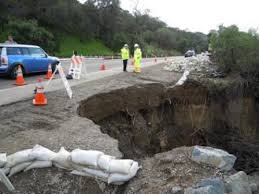 ting around zero. The frequency and intensity of these events may increase in the future with climate change. Key vulnerability factors include aging constructions, poor maintenance, poorly dimensioned drainage systems, human activity changing runoff patterns and poor communication and coordination between infrastructure owners and land developers, which may be affected by legislation and institutional setup.
ting around zero. The frequency and intensity of these events may increase in the future with climate change. Key vulnerability factors include aging constructions, poor maintenance, poorly dimensioned drainage systems, human activity changing runoff patterns and poor communication and coordination between infrastructure owners and land developers, which may be affected by legislation and institutional setup.
The study: Based on the existing damage data, an analysis of factors contributing to transport infrastructure vulnerability and resilience in the Nordic countries will be carried out. For selected engineered slopes and embankments, risk analyses will be performed to identify main sources of vulnerability. This will be done through case studies, modelling and stakeholder interaction. We will in particular investigate the impact of poor land use practices that e.g. may change runoff patterns during precipitation events.
The activities will benefit from synergies with international EU and CEDR projects, as well as ongoing national initiatives.
Task 5.2 Mitigation of risk posed by snow avalanches on transport infrastructure
Team: NGI: Christian Jaedicke (WP leader), Bjørn Vidar Vangelsten, SGI: Magnus Eriksson, IMO: Harpa Grímsdóttir.
The problem: Norway, Sweden and Iceland all face dangers of snow avalanches that may threaten lives and societal infrastructure, including transport. Mitigation includes p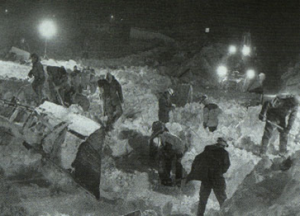 hysical measures such as protection walls and non-physical measures such as prediction and warning. The problem is that physical measures are very costly and inflexible while prediction models need to be improved to increase their reliability.
hysical measures such as protection walls and non-physical measures such as prediction and warning. The problem is that physical measures are very costly and inflexible while prediction models need to be improved to increase their reliability.
The study: To improve warning, a probabilistic snow avalanche exposure model will be developed to estimate probability of an exposed road/railway being hit by a snow avalanche in the coming 24 hours.The model will consider triggering and run-out and will be calibrated using existing snow avalanche data.
Existing mitigation measures reducing risk to transport infrastructure will be mapped. Detailed analysis will be carried out of selected cases considering cost effectiveness of physical protection measures versus use of monitoring and warning, including an analysis of the cost of “false alarms” when transport lines are closed.
Task 5.3 Risk assessment and prevention for flooding and coastal erosion in extreme weather
Team: SGI: Per Danielsson (WP leader), Lisa Van Well, GEUS: Hans Jörgen Henriksen, IMO: Halldór Björnsson
The problem: Extreme weather events cause floods and coastal erosion, which may have severe consequences for people and infrastructure, as happened in Denmark and Southern Sweden in 2011 and 2013. In many places regional compilation of the effects is lacking and risk assessment is only performed locally. Similarly, prevention measures are also decided locally without structured follow-up and evaluation of their effectiveness.
Climate change impacts are likely to have different effects on various hazard risks in 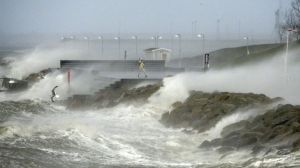 different Nordic regions. While a 100-year flow event in some areas may become a 20-year event in the future, the uncertainty of such predictions has to be communicated to stakeholders and the public, both regarding uncertainties related to input from global and regional circulation models, extreme values analysis and hydrological predictive uncertainty of storm surge and flooding risk.
different Nordic regions. While a 100-year flow event in some areas may become a 20-year event in the future, the uncertainty of such predictions has to be communicated to stakeholders and the public, both regarding uncertainties related to input from global and regional circulation models, extreme values analysis and hydrological predictive uncertainty of storm surge and flooding risk.
The study: By comparing best practices in the Nordic countries, guidelines for risk assessment and preventive measures will be developed, including ecosystem based adaptation as well as land use and coastal planning with a holistic perspective. Statistics on the consequences of flooding and storm events in vulnerable areas will be compiled, including uncertainty analysis in relation to model based predictions. Methods for vulnerability assessment, e.g. a Multi-scale CV Index developed in the UK
will be evaluated, adapted and tested for use under Nordic conditions.
Task 5.4 Arctic offshore challenges
Team: COPE/CBS: Morten Thanning Vendelø (WP leader), Rasmus Dahlberg, Kristian Cederwall Lauta; ICG: Snorre Greil; UI: Anna Karlsdóttir, Ingibjörg Jónsdóttir; DEMA: Mads Ecklon; NCIP: Víðir Reynisson, Eggert Magnússon; FKO: Michael Hjorth;
ICO: Björn Karlsson.
The problem: Increased tourism, shipping and offshore oil exploration in the Arctic following climate change and emerging technologies create new dangers due to extreme weather, uncharted waters and lack of infrastructure. It is important to prepare the prevention of, response to and recovery from disasters in Arctic waters and suggest infrastructural improvements to address these challenges.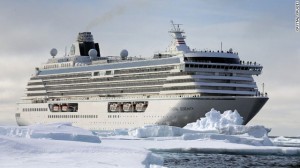
The study: This task will be divided as follows: Current hazards and vulnerabilities in the Arctic (offshore) will be mapped to establish an overview of the state of the field. Existing modes of learning and knowledge transfer from Search and Rescue Exercises (SAREX) in the Arctic will be investigated and evaluated. An on-site observation will be conducted of the planning, execution and evaluation of SAREX in the Arctic, to investigate existing modes of imagining, discovering and reacting to emerging offshore hazards and vulnerabilities in the Arctic. We plan to develop a concept for computer-assisted cross-boundary table-top SAREX in the Arctic. By surveying the state of the field and best practices from other regions and activities the aim is to provide the involved countries with better tools for future table-top exercises. Finally we conduct a feasibility study on an International Rescue Hub at the former US Naval Air Station in Keflavik, Iceland, with the aim of creating more permanent infrastructure supporting Mass Rescue Operations in the Arctic. A Mass Rescue Operation (MRO) is one that involves a need for immediate assistance to large numbers of persons in distress such that capabilities normally available to SAR authorities are inadequate.
Task 5.5 The vulnerability of air traffic to volcanic eruptions
Team: UI/Enhance: Guðmundur Freyr Úlfarsson (WP leader) , Guðrún Pétursdóttir, Uta Reichardt; FutureVolc: Freysteinn Sigmundsson, Magnús Tumi Guðmundsson.
NORDRESS will form a joint collaboration platform for investigation into the effects of volcanic eruptions on societal security. In this respect NORDRESS will bring together partners from the ongoing FP7 projects FutureVolc and Enhance. FUTUREVOLC is a 26-partner project funded by FP7 Environment Programme of the European Commission, addressing topic “Long-term monitoring experiment in geologically active regions of Europe prone to natural hazards: the Supersite concept”.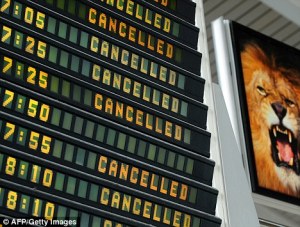
The project started 1 October 2012 and has duration of 3.5 years. The supersite concept implies integration of space and ground based observations for improved monitoring and evaluation of volcanic hazards, and open data policy. The project is led by University of Iceland together with theIcelandic Meteorological Office. ENHANCE investigates multisector partnerships in order to improve societal resilience to natural hazards. Its direct connection with NORDRESS is through a Case study on the impacts of volcanic ash on air travel. This case study is lead by NORDRESS partners at the University of Iceland.
